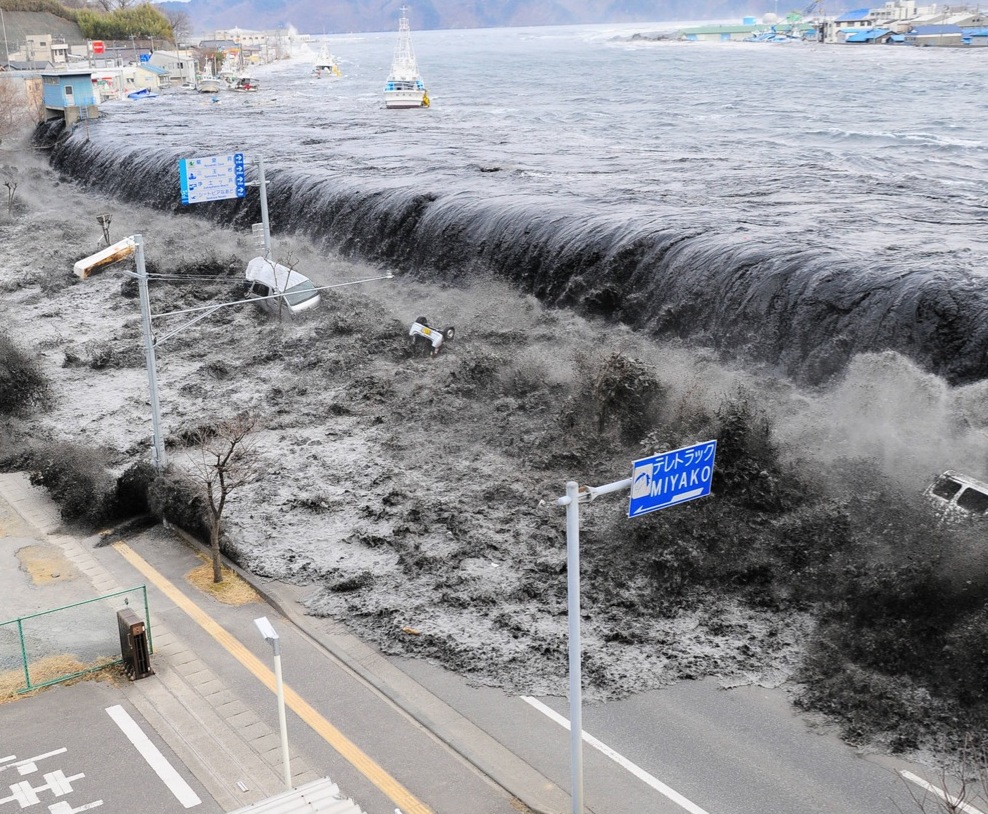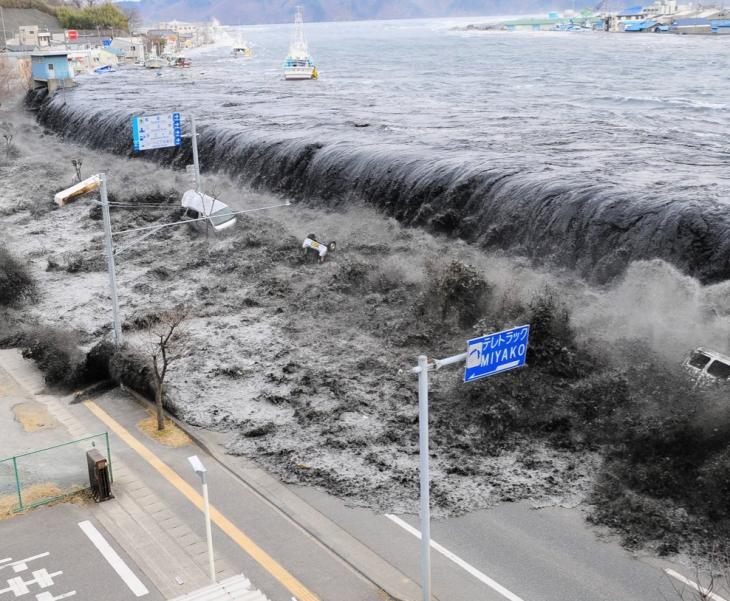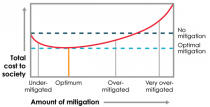Article Main Body

Tsunami from the giant 2011 Tohoku, Japan, earthquake pouring over 10 m seawall.
Image Credit: Reuters
Seismologists are investigating how earthquake hazard maps should work , developing methods to assess how they actually work, and educating students about the complex issues involved in defending society against natural hazards:
In Shakespeare’s Henry IV, Glendower says “I can call spirits from the vasty deep”; Hotspur replies “Why, so can I, or so can any man; but will they come when you do call for them?” Seismologists assessing earthquake hazards face the same challenge; they can make detailed assessments, but the Earth sometimes does not obey.
The problem is illustrated by images of the tsunami from the giant 2011 Tohoku earthquake pouring over 10 m seawalls, which catalysed discussions among seismologists and earthquake engineers about the fact that highly destructive earthquakes often occur in areas that earthquake hazard maps predict to be relatively safe. As Science magazine (Kerr 2011) explained, “The seismic crystal ball is proving mostly cloudy around the world.”
This cloudiness is a problem for the high-stakes game of chance that society plays in preparing for earthquakes and other natural disasters. We want to assess the hazard – how often dangerous events happen – and use this assessment to mitigate or reduce the risk – the resulting losses. Often Nature surprises us, when an earthquake, hurricane or flood is bigger or has greater effects than expected from hazard assessments. In other cases Nature outsmarts us, doing great damage despite expensive mitigation measures, or making us divert resources to address a minor hazard.
The challenge is to develop policies that make sense for society, given that we have limited resources, limited knowledge about earthquake processes, and thus limited ability to estimate possible future damage.This can be posed in terms of finding a level of hazard mitigation that minimizes total cost to society. That cost is the sum of mitigation costs, such as earthquake resistant construction or tsunami defences, plus the expected loss for future earthquakes assuming a given level of mitigation. The expected loss is the sum of losses in various expected events times the assumed probability of each event. As shown, the optimal level of mitigation is the minimum of the cost curve. Less mitigation decreases construction costs but increases the expected loss and thus total cost. More mitigation gives less expected loss but higher total cost.
Surprisingly, although earthquake hazard maps are used worldwide, and affect millions of people and billions of dollars, seismologists know little about how well the maps predict the shaking that actually occurs. They don't know how good or bad the maps are or how much confidence users should have in them.
Fortunately, this situation is starting to change. Seismologists are facing the challenge and asking the tough questions. They are investigating how maps should work and developing methods to assess how they actually work. The results can be surprising. For example, Italy's hazard map predicts levels of shaking much higher than observed in the past 2000 years. In some ways, Japan's earthquake hazard map doesn't work as well as assuming that the earthquake hazard is uniform across the nation. These results indicate issues that need to be resolved
There's a long way to go, but it looks like we are on the right track.
We are also learning how to better educate students about natural hazard issues. How should a developing nation allocate its budget between building schools for towns that have none and making existing schools earthquake resistant? Does it make more sense to build levees to protect against floods or to prevent new development in the areas at risk? Would more lives be saved by making hospitals earthquake resistant or by using the funds for patient care? One approach is to use everyday decisions—whether or not to wear a bike helmet or cheat on bus fare— to make abstract concepts like risk perception, cost-benefit analysis, and alternative mitigation strategies more understandable.
 Outreach
Outreach



